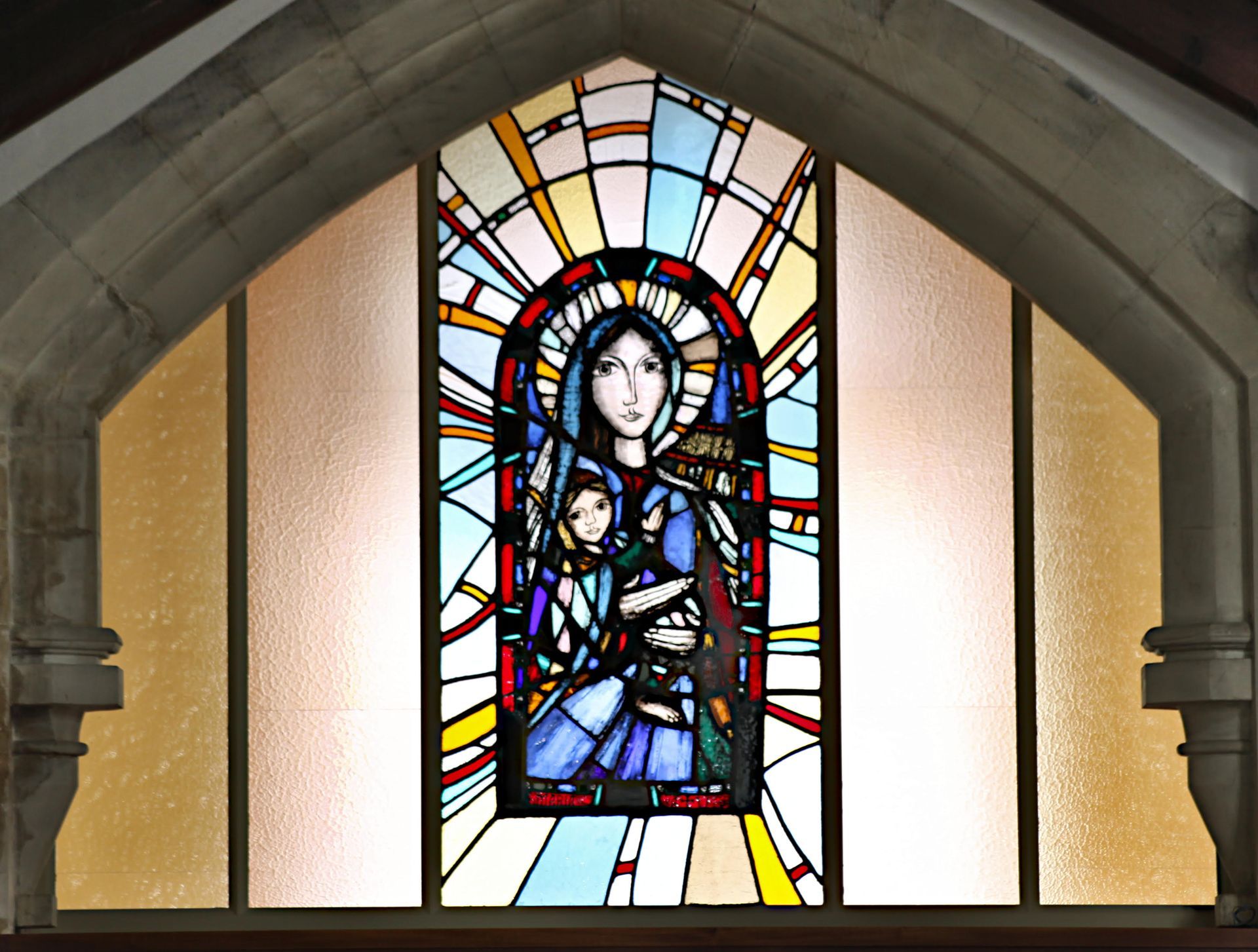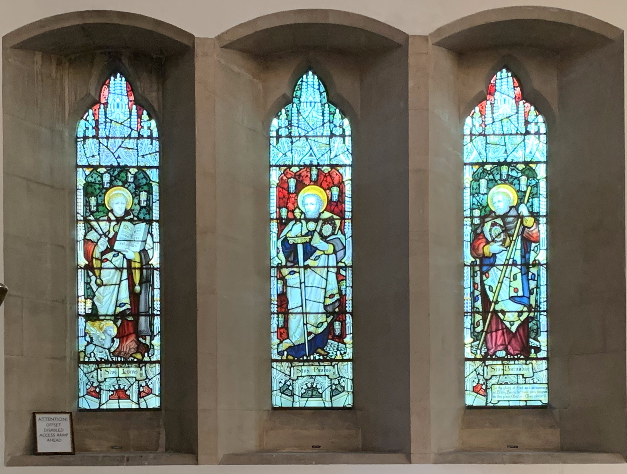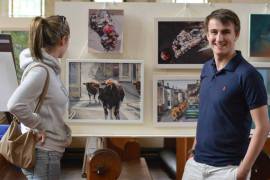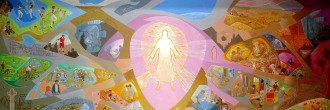
St George's Church in Nailsworth, Gloucestershire, has installed a new stained glass window depicting the Madonna and child, reinforcing the church's reputation for nurturing modern craftsmanship.
The church is already home to Lorna May Wadsworth's The Last Supper, which is a 12-foot canvas featuring a modern-day interpretation of Da Vinci's masterpiece.
This new 9ft by 12ft installation, designed and created by Greg Tricker, the internationally-recognised stained glass artist, will cement the church in the guidebooks as a place to see moving and inspirational spiritual art.
The beautiful stained glass window of the Madonna and Child is mounted in a cherry wood frame which was constructed by John Meletiou, Director of Meaco Woodwork Ltd, Nailsworth.
The original St George’s Lady Chapel extended beyond a wooden screen that was erected some years ago to accommodate a new clergy vestry. The new window is set in the void, above the screen, and has reinstated the Lady Chapel’s importance in a dramatic fashion.
It took around 6 months to complete, with Greg drawing the artwork, selecting and cutting the glass, and mixing and painting a special dark paint onto the glass for the detail. The cut glass is fired at 680 degrees Celcius and glows gold and yellow. During this process, the black paint sinks into the surface and fuses with the glass. Once it's cooled, it can be rubbed back to allow the detail of the artwork to shine through. Then each piece of glass needed to be surrounded by lead, brushed down, and soldered into place.
Greg said, "The glass has a wonderfully translucent quality, a sense of living light that you're standing in and that you feel inwardly. The Madonna's protective veil almost comes down around the Christ child, depicting some of the mystery that surrounds Mary. It shows the time that light came into the world and the light is transmitted to us. I find it a joy to work with the colours and their qualities and become very immersed in my work."
To mark the unveiling, church members, previous clergy and representatives of Nailsworth organisations came together on Sunday 2 July for a special service led by the Revd Caroline Bland at which the Rt Revd Robert Springett, Bishop of Tewkesbury, dedicated the window, the funding for which was made possible by an anonymous donation.
The Revd Caroline Bland, Vicar for the Nailsworth Benefice, said, "Stained Glass windows are a prominent feature in churches and cathedrals and the result of a craft that in Britain can be traced back to the 7th Century. Sunlight, of course, is such an important element in showing the beauty of such windows, as the light travels through the glass, it reveals the beauty of colour and pattern and in churches can draw us into a spiritual connection with God. Sunlight enables a story of creativity to be told and to see the glory of God reflected in the images that are portrayed."
Bishop Robert said, "One of the great things about stained glass windows is how they can speak to us in different ways. For me, I find Mary’s eyes most striking, with the brightness of the light shining through. As she gazes on the Christ Child and on us, we see the love of God made visible. I pray that as you take time to gaze upon it, God may speak to you the word you should hear and that you might be brought still closer to the life of Christ."







